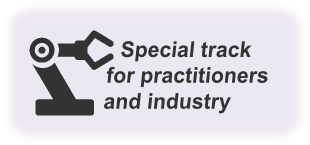Keynote speakers
Laura Evans
Sally Fowler Davis
Assistive technology in rehabilitation; Have we lost the plot?
Read abstract
Practitioners are still question the use of telecare (‘friend or foe’?) and there remains a policy/practice gap in relation to the wide deployment of advanced assistive technologies as a key requirement in living with a disability, across the lifespan. We will argue that commissioners and providers need to consider the drivers to sustained system level improvement in the deployment of technology and work much more closely with clinical /academic practitioners to deliver health outcomes.
Sofia L. Kalman
 | Education: Semmelweis Medical University, Budapest, 1966-1972 Toggle CVDegrees:
Professional experiences
Teaching experiences
Foreign experiences
|
What makes it tick? Components of the effective use of AAC
Read abstract
AAC is still an emerging area of contemporary rehabilitation. It is a way for integrating persons with severe communication disorders into our societies. Most communication disorders are the result of the lack of speech. Life of a non-verbal person in a verbal society is unimaginable for the speaking majority. The more severe is the speech disorder the more expressed is the communication difficulty: complex problems call for complex solutions.People with special communication needs need complex communication services.
- Complexity means well-trained AAC therapists. But who, how and where will train them? Where will they work? Who will pay for the extra costs for AAC?
- Complexity also means a broad range of available low tech and high tech communication aids, and an extremely high level of IT services. Where will be those informaticians who will understand the needs of a special teacher working with a person with a severe disability?
- Complexity involves a wide range of administrative, financial, social and emotional problems of families living with a non-speaking person. Are the AAC experts or the IT advisors willing to deal with these problems?
- Research is expected to ease the complexity by shedding light on dark areas. In this area certain problems cannot be approached through quantitative methods, so development of qualitative methods brought a tremendous development in AAC research. But are there enough enthusiastic researchers well trained in qualitative methods?
Thus it is easy to state that communication is a human right and nobody can be deprived of it just because of his/her physical condition, but to provide the adequate services needs much more than a simple act of goodwill.
Mike Paciello
 | Mike’s interest in accessibility was piqued in the mid-’80s when he encountered the then-laborious process of converting software documentation into braille. Mike knew there had to be a better way, and that led to him cofounding the International Committee for Accessible Document Design (ICADD), which created the first international specification for accessible electronic documents. Toggle CVMike helped kick off the W3C’s Web Accessibility Initiative (WAI), and he was among the authors of the first version of the Web Content Accessibility Guidelines (WCAG). He also wrote the first book on web accessibility, Web Accessibility for People with Disabilities. And in 2002, he went on to found The Paciello Group. Mike served as the co-chair of the advisory committee that rewrote the Section 508 and Section 255 standards for the Access Board. Two years and forty-one collaborating organizations later, they presented their new and improved guidelines to the Access Board in the spring of 2008. Mike and his wife Kim have lived in New Hampshire for over thirty years, and they never tire of its serene wooded landscapes. Mike’s also recently rediscovered his love for cooking, and if you’re wondering what’s on the menu, well, anything’s fair game—as long as it’s Italian.] |
E-Accessibility: Achieving Pervasive Inclusion
Read abstract
Regardless of ability, we are a global society immersed in the Digital Age. For
more than two decades, eAccessibility has achieved a state of maturity best
described as recognizable and relevant.
This presentation provides insight into the current state of eAccessibility
involving research, development, implementation and practice and suggests five
spectrums of change needed to raise the bar to achieve pervasive inclusion.
Penny Standen
 | Penny Standen is Professor in Health Psychology and Learning Disabilities at Nottingham University. From early work on developing virtual environments to support independence in people with intellectual disabilities, her work has grown to embrace serious games, location based services, robotics and contemporary media. She is currently investigating the potential of a range of new technology to support profound and multiply disabled adults and young people. |
Designing dedicated assistive technology or adapting mainstream technology? Examples from intellectual disabilities.
Read abstract
An increasing number of children with profound and multiple disabilities (PMID) are surviving to school age and beyond. Even special schools struggle to meet their educational needs. At the same time we are all living longer but can still expect to spend our later years with reduced ability. In spite of these increasing numbers, technology designed for those with a disability is expensive and people are reluctant to use it. In Nottingham, we have been exploring the use of adapted mainstream technology such as contact microphones, robots, eye gaze capture and brain computer interfaces to facilitate communication and access to electronic based learning materials in children with PMID. The presentation will describe some of this work to enhance learning in pupils with PMID, the challenges experienced evaluating its effectiveness and how future developments in technology might benefit those with disabilities as well as those without.
Deadlines
Deadline for announcing Specific Thematic Session (STS)
31 January 2015
Extended abstract submission (3-4 pages):
28 February 2015
Postponed to 10 April 2015
Extended abstract submission (2 pages)
for AT-Practice Track
10 April 2015
Notification on acceptance:
30 April 2015
Preliminary Programme
1 May 2015
Camera ready paper submission:
31 May 2015
Extended to 15 June 2015
Early registration fee's payment:
31 May 2015
Extended to 15 June 2015
Pre-Conference 2015
9 September 2015
Conference date: 9-12 September 2015
9-12 September 2015
Copyright © 2017 AAATE 2015




 János Áder
János Áder







